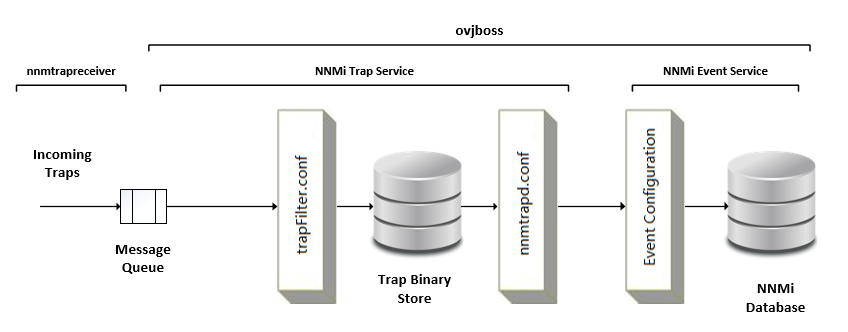

- #START SNMP TRAP RECEIVER CENTOS INSTALL#
- #START SNMP TRAP RECEIVER CENTOS FREE#
- #START SNMP TRAP RECEIVER CENTOS MAC#
You can replace your nf file with one of the examples in the following sections. To move the existing configuration file, open a shell session and enter the following at the command line: After stopping the snmpd agent, you must move the existing config file. You must move, not copy, the file, to ensure that you are creating a new file and not simply append new settings to the default settings in the nf file. Because we want to create a new, clean nf file, you must replace the existing file. In most cases, your computer(s) will already have an existing /etc/snmp/nf file that includes the default settings. file defines how the Net-SNMP daemon will behave and includes information about the physical location and contact information for the server, access control for the Net-SNMP agent, and trap destinations for the Net-SNMP agent. etc/init.d/snmpd stop Step 3: Creating the nf file  If the snmpd agent is running, enter the following command to stop the agent:. If snmpd is running, you will see a message like "snmpd is running". To see if the snmpd agent is running, enter the following at the prompt:. To check the snmpd agent and stop it (if necessary): If it is, you must stop the snmpd agent so you can create the configuration file. You must check if the snmpd agent is running. NOTE: You should configure the nf file before you start the snmpd daemon. The configuration file for the snmpd agent is installed in /etc/snmp/nf. The snmpd binary is installed in the directory /usr/sbin/snmpd. The Linux RPM for net-snmp includes the snmpd (Net-SNMP agent) binary as follows:
If the snmpd agent is running, enter the following command to stop the agent:. If snmpd is running, you will see a message like "snmpd is running". To see if the snmpd agent is running, enter the following at the prompt:. To check the snmpd agent and stop it (if necessary): If it is, you must stop the snmpd agent so you can create the configuration file. You must check if the snmpd agent is running. NOTE: You should configure the nf file before you start the snmpd daemon. The configuration file for the snmpd agent is installed in /etc/snmp/nf. The snmpd binary is installed in the directory /usr/sbin/snmpd. The Linux RPM for net-snmp includes the snmpd (Net-SNMP agent) binary as follows: 
After you have verified and installed all the packages, you can create the net-snmp configuration file and start the snmp service (agent).If one or more of these packages are missing you can run the appropriate command from the following commands:.Ensure that the output of this command includes each RPM listed above.Enter one of the following at the prompt:.To continue with the steps in this section, you must verify the presence of these RPMs on the server that SL1 will monitor. The operating system for SL1 ships with the following RPM packages for Net-SNMP: Step 1: Verifying and Installing Net-SNMP with RPM Packages Starting snmpd and testing connectivity to Net-SNMP.This file defines how the Net-SNMP agent will behave and includes information on the physical location and the contact information for the server, access control for the Net-SNMP agent, and trap destinations for the agent.
#START SNMP TRAP RECEIVER CENTOS FREE#
Verifying and Installing Net-SNMP using free RPM Packages. Installing and Configuring Net-SNMP on a Linux computer includes the following steps: #START SNMP TRAP RECEIVER CENTOS MAC#
Network interface details, including name, speed, and MAC address. System name, operating system, operating system version, and uptime. The data is then used to create reports and graphs, accessible via the graphical user-interface.īy querying Net-SNMP data-points, SL1 can collect and present at least the following about a device: These Dynamic Applications allow SL1 to collect selected data-points from Net-SNMP devices. SL1 includes multiple default Dynamic Applications for the Net-SNMP agent. If Net-SNMP is correctly installed and configured on a Linux device, SL1 can automatically query the device and collect data. NOTE: Most Linux distributions will require the same installation and configuration as described in this section. #START SNMP TRAP RECEIVER CENTOS INSTALL#
If you want to monitor multiple devices with Net-SNMP, you must install Net-SNMP and create the nf file on each device to be monitored. Installing Net-SNMP on Linux Devicesįor each Linux device that you want to monitor with Net-SNMP, you must install and configure Net-SNMP. For detailed descriptions of Net-SNMP for each supported operating system, see.







 0 kommentar(er)
0 kommentar(er)
